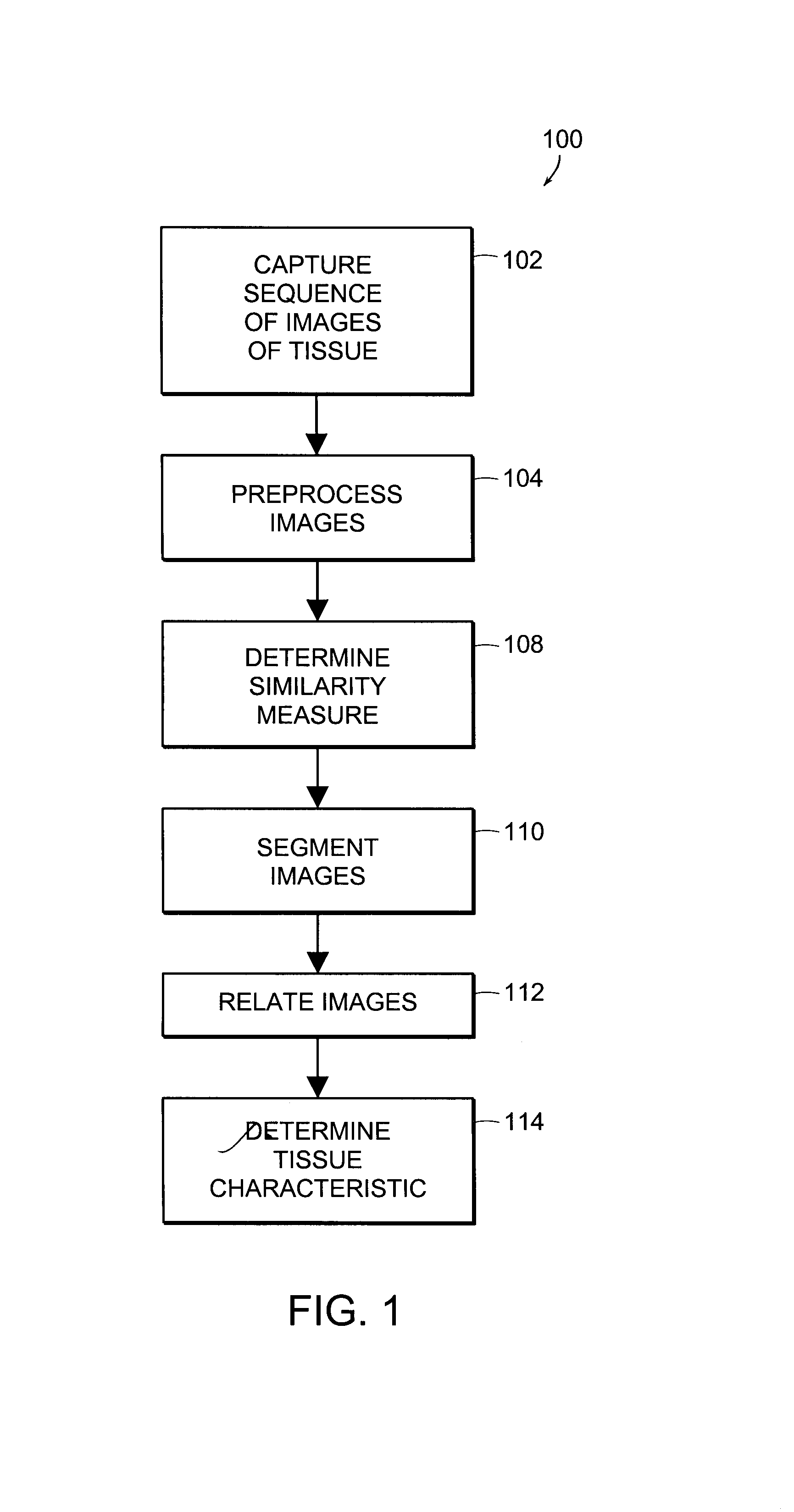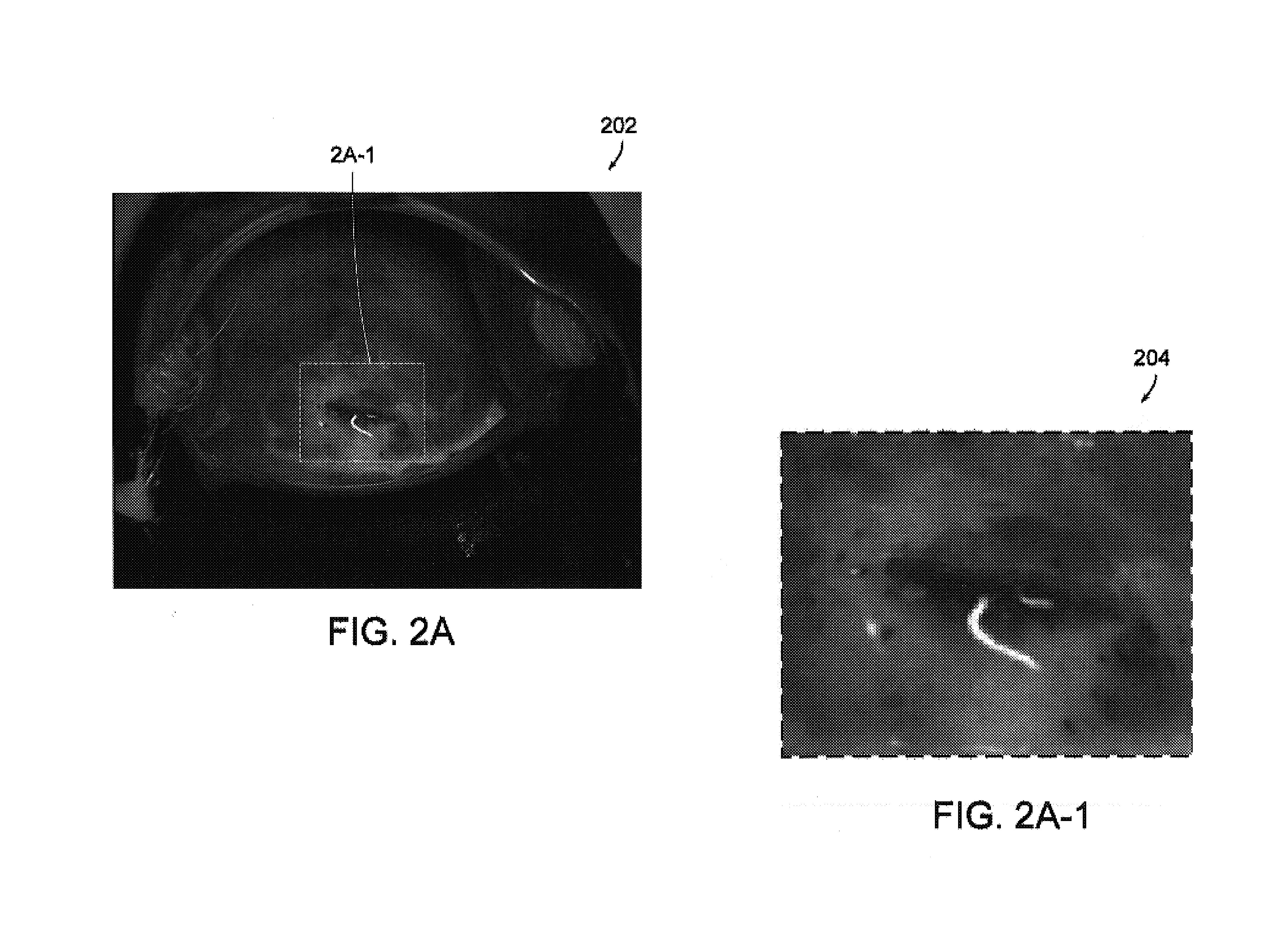Image processing using measures of similarity
a similarity and image processing technology, applied in the field of image processing, can solve the problems of complex and confusing patterns in colposcopic images, complex changes in patterns, and inability to identify abnormalities in tissue,
- Summary
- Abstract
- Description
- Claims
- Application Information
AI Technical Summary
Benefits of technology
Problems solved by technology
Method used
Image
Examples
Embodiment Construction
[0070]In general, the invention provides methods for image segmentation across a plurality of images. Segmentation across a plurality of images provides a much more robust analysis than segmentation in a single image. Segmentation across multiple images according to the invention allows incorporation of a temporal element (e.g., the change of tissue over time in a sequence of images) in optics-based disease diagnosis. The invention provides means to analyze changes in tissue over time in response to a treatment. It also provides the ability to increase the resolution of segmented imaging by increasing the number of images over time. This allows an additional dimension to image-based tissue analysis, which leads to increase sensitivity and specificity of analysis. The following is a detailed description of a preferred embodiment of the invention.
[0071]The schematic flow diagram 100 of FIG. 1 depicts steps in the analysis of a sequence of images of tissue according to an illustrative ...
PUM
 Login to View More
Login to View More Abstract
Description
Claims
Application Information
 Login to View More
Login to View More - R&D
- Intellectual Property
- Life Sciences
- Materials
- Tech Scout
- Unparalleled Data Quality
- Higher Quality Content
- 60% Fewer Hallucinations
Browse by: Latest US Patents, China's latest patents, Technical Efficacy Thesaurus, Application Domain, Technology Topic, Popular Technical Reports.
© 2025 PatSnap. All rights reserved.Legal|Privacy policy|Modern Slavery Act Transparency Statement|Sitemap|About US| Contact US: help@patsnap.com



